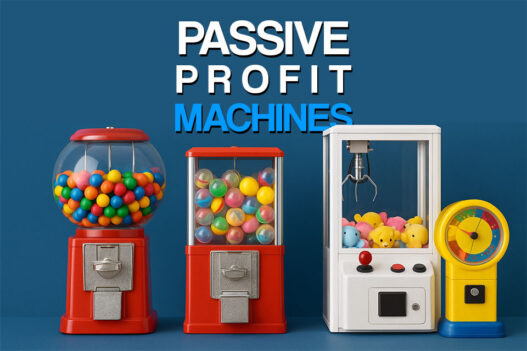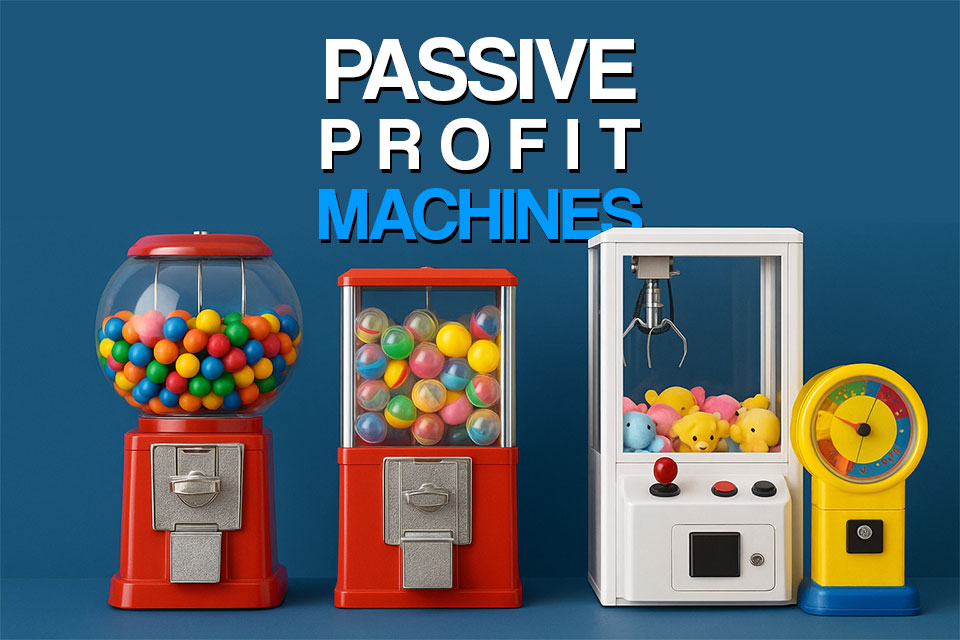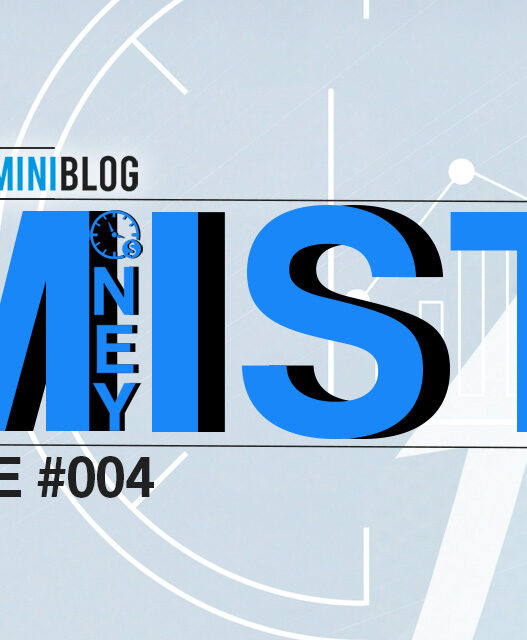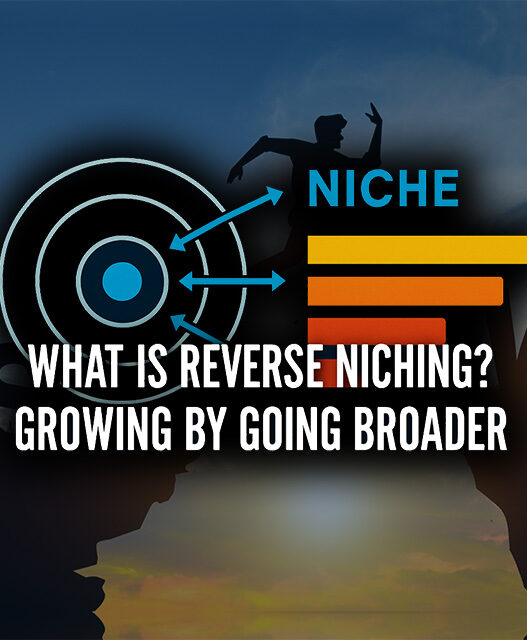When you hear the phrase “passive income”, your mind probably jumps to real estate or dividend stocks. But there's actually a much more tactile, low-barrier way to build recurring income streams. There are literally passive-profit machines that do exactly what the name implies.
Passive-profit machines are those humble contraptions that sit in restaurants, arcades, or bowling alleys quietly making money while you're not even there.
From gumball machines to claw machines to quirky “prize every time” spinners, these things can become cash cows if you approach them with the right mindset. This isn't a get-rich-quick scheme. It's an old-school hustle that rewards consistency, creativity, and a willingness to get your hands dirty (sometimes literally with candy dust or quarters, because money is gross).
So let's break down how you can get into the business of passive-profit machines—what's out there, how to buy them, how much you'll spend, what you'll earn, and how far you can take it.
What Are Passive-Profit Machines?
Think of them as money-generating gadgets that rely on curiosity, impulse, or entertainment value. You put them in places where people have downtime or loose change, and they quietly go to work.
These aren't the full-line vending machines with sodas and chips (that's a different animal). Instead, we're talking about smaller, often more whimsical machines that trade on novelty, nostalgia, and accessibility.
Here's why I'm just now talking about them: They've been around for decades, but in 2025 they're having a quiet comeback. Why? Because people crave tactile fun. While everyone's glued to their phones, a flashing claw machine or an old-school candy spinner can feel fresh again.
The Types of Passive-Profit Machines
Not all machines are created equal. Some cost a couple hundred bucks and run forever. Others are digital beasts that require electricity, maintenance, and a lot more capital. Let's walk through the spectrum.
Classic Machines Everyone Knows
- Gumball/Candy Machines – The entry-level option. Mechanical, no electricity required. People drop in a quarter, twist, and out pops candy or a gumball. They're timeless, cheap, and reliable.
- Toy Capsule Machines – Those little plastic eggs with toys inside. These thrive in family restaurants, skating rinks, and dollar stores.
Entertainment-Based Machines
- Claw Machines – Flashy, fun, and addictive. People can't resist “just one more try.” They require more investment but can generate serious revenue.
- Arcade-Style Machines – Think ticket redemption games or skill-based machines. These straddle the line between vending and entertainment.
Unique Machines You Probably Haven't Seen
Here's where things get fun. These niche machines surprise people—and that's part of their power.
- Sticker/Tattoo Machines – Kids beg for them, parents cave.
- Prize Wheels – Insert a coin, spin, and win something small.
- Miniature Crane Machines for Plush Keychains – Lower cost than full claw setups.
- Novelty Gumball Variants – Machines that drop bouncing balls instead of candy.
- Prize Every Time Machines – Little grab boxes that guarantee a toy.
- Digital Prize Machines – Swipe a card or use contactless payment for digital games with physical rewards.
These unique machines are often overlooked, which means less competition and more chances to surprise your market.
How Much Do These Machines Cost?
You can start this business on a shoestring budget—or go all in with something more advanced. Here's the range:
- Gumball/Toy Capsule Machines: $100 – $500 new. Used ones? $50–$200 if you hunt on Craigslist or Facebook Marketplace.
- Claw Machines: $1,500 – $5,000 depending on size, condition, and features.
- Arcade Machines: $3,000 – $10,000+ for high-end models.
- Unique/Novelty Machines: Anywhere from $300 – $2,000 depending on rarity.
If you're just starting, don't buy brand new. The secondary market is full of operators unloading gear at steep discounts. Sites like eBay, Craigslist, or wholesale suppliers (CandyMachines.com is a classic) are goldmines. Don't forget about thrift stores and flea markets.
Placing the Machines: The Art of the Deal
Buying the machine is the easy part. Getting a good location is where the business is won or lost.
Where to Put Them
- Family restaurants
- Bowling alleys
- Laundromats
- Roller rinks
- Ice cream shops
- Car washes
- Mini golf courses
- Even niche places like pet groomers (kids need to be occupied while pets get clipped)
How to Negotiate Placement
Business owners know their customers like impulse entertainment. But they also don't want clutter. Your pitch needs to highlight three things:
- No Cost to Them – You provide the machine, fill it, and maintain it.
- A Cut of the Profits – Typical splits: 70/30 (you/owner) for candy machines, 50/50 for higher-earning machines like claw games.
- Added Value – You're giving their customers a fun distraction, making the business look more family-friendly.
It helps to walk in with a sample machine (or at least pictures) and show that it's clean, modern, and not an eyesore.
Startup Costs: What to Expect
Let's say you start with three gumball machines and one claw machine.
- 3 Gumball Machines @ $150 each: $450
- 1 Used Claw Machine: $2,000
- Initial Candy/Prizes: $200
- Miscellaneous (travel, containers, business cards): $200
Total Initial Investment: $2,850
That's less than many people spend on a single vacation.
How Much Can You Earn?
Earnings vary wildly based on location, traffic, and type of machine. But here are realistic ranges:
- Gumball/Candy Machines: $20–$60 per month per machine.
- Claw Machines: $300–$1,000 per month.
- Arcade Machines: $500–$2,000 per month depending on venue.
If you start small with a mix, you could conservatively make $500–$800/month. Scale up with 10+ machines, and you're suddenly looking at $3,000–$5,000/month.
Within a year, if you reinvest profits into more machines, you could build a five-figure annual income.
Filling and Maintaining the Machines
The daily grind of this business isn't glamorous, but it's simple.
Filling the Machines
- Candy & Gumballs: Buy in bulk from wholesalers like Sam's Club or CandyMachines.com.
- Claw Prizes: Plush toys, electronics knock-offs, keychains. Keep it fresh—rotate stock so regulars don't get bored.
- Frequency: Candy machines might only need checking once every 2–3 weeks. Claw machines, weekly.
DIY vs. Outsourcing
- Do It Yourself: Saves money, builds experience. But you're trading time for profit.
- Hire Someone: Once you scale past 20+ machines, paying a local teenager or part-timer can free up your time.
Maintenance
Mechanical candy machines rarely break. Claw and arcade machines? Expect occasional hiccups. If you're handy, learn to fix jams and motor issues. If not, budget for a tech. The rule of thumb: DIY early, outsource later.
Growing the Business Through Marketing
Believe it or not, this business benefits from marketing. A few strategies:
- Word of Mouth: Happy venue owners will tell their peers.
- Social Media: Share fun videos of kids winning prizes. Tag the location so they get free promotion too.
- Networking: Bowling alley owners talk to roller rink owners. One good placement leads to five.
- Local Sponsorships: Offer to donate a percentage of proceeds to local schools or charities. Builds goodwill.
If you have a unique machine, like the Japanese capsule machine, some people will go there just for the machine.
These are Taiwanese capsule machines that would blow people's mind in Small Town, USA:
This can actually build into an entire capsule store.
Passive-Profit Machines: Side Hustle or Full-Time Job?
This is the million-dollar question. Should you treat this as your main gig or keep it as a side hustle?
- Side Hustle: Perfect if you want to test the waters. Start with 3–5 machines, invest $1–3K, and see if it sticks.
- Full-Time: To replace a day job, you'll likely need 50+ machines, spread across multiple high-traffic locations. At that point, you're running a true business with employees, logistics, and inventory management.
Many operators grow gradually. They start as weekend warriors, and in a few years, they're running fleets of machines across entire regions.
You may find that you have to think outside the box for placement, because there are machines in almost every business.
Case Studies: Real People, Real Results
I don't want to identify the actual names, so here are three stories I found online:
The College Student
Jake, a 21-year-old, bought two used candy machines for $200 each. He placed them in pizza shops near campus. After six months, he had five machines and was making $600/month. That covered rent—and he only spent 3–4 hours a month managing them.
The Stay-at-Home Parent
Melissa started with a claw machine in a local roller rink. Her kids loved stocking it with plush toys. She grew it to four machines in family restaurants. Today she makes around $1,200/month part-time, which supplements her family's income without conflicting with parenting.
The Retired Mechanic
Ron had time on his hands and a knack for fixing things. He bought six machines, including an arcade-style ticket game. Because he could handle repairs himself, he scaled quickly to 20+ machines. He now clears $4,000/month and calls it his “fun retirement project.”
Just think, you could be the fourth case study.
Tips and Hacks to Maximize Success
- Test Locations Aggressively: Don't be afraid to move a machine if it's underperforming.
- Track Everything: Keep spreadsheets of earnings, costs, and refill schedules. Data shows you where to double down.
- Presentation Matters: A clean, shiny machine earns more than a dusty, neglected one.
- Bundle Deals: Offer owners multiple machines at once so you lock up prime real estate.
- Experiment With Pricing: Some claw machines now run $1 per play. Higher price = higher margin, but balance it with customer expectations.
- Think Beyond Candy: Trinkets, squishy toys, collectible cards—kids are unpredictable. Test what works.
Final Words
Passive-profit machines are proof that old-school businesses still work in a digital age. They're simple, fun, and scalable. You can start with a few hundred dollars, a couple of machines, and a free weekend—and grow it into a small empire if you've got the hustle.
They may not make you millions overnight, but they can buy freedom, flexibility, and financial resilience. And sometimes, that's even better.
If you've ever wanted to dip your toe into entrepreneurship without risking your life savings, this might be the most underrated way to start.
Because while everyone else is chasing the next big app or stock tip, your little gumball machine could be out there quietly winning the game.
The post From Gumballs to Gaming: A Beginner's Guide to Passive-Profit Machines appeared first on MoneyMiniBlog.



















